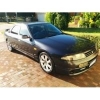Differences Between R33 And R34 Rb26 Engines?
Announcements
-
Similar Content
-
Latest Posts
-
I should. But it already uses too much fuel for a daily. You might note my recco for engine chnages are almost exclusively to people who have it as a weekender/summer car. I don't even have room to keep the spares for this one, let alone another car.
-
If I had "perfect R33 GTR" kinda money I would have bought one of the crazy expensive low mileage HJA cars, but I am sadly not that wealthy. I already picked this car out of various Skylines for sale locally, most of which were worse in some way. Only a few cars were actually better but also more expensive. In terms of buying a motor locally, I at least have the option to inspect it myself and juding the seller as a person, and used or freshly rebuilt engines that some people sell are actually ok price-wise. I knew the car was going to require work, but shit piled up real fast and I haven't even driven 1000km yet as the turbo started oiling like a bitch within a few weeks after I got the car. I assume it wasn't actually me who cracked it, though there is no way to know when that crack formed and if the previous owner even knew it was there. Buying another 05U Block can be a gamble, yeah, but the cheapest PRP cast block is like twice or more money-wise, and billet is 3 or 3 times as much. For now I am most likely just keeping the current engine, as a rebuild or engine swap isn't happening right now. But I am seriously considering buying a second engine and selling mine in return. Might be a sweet deal at the end.
-
Hi all. I need some help buying the correct size banjo bolts for my 2860 turbos. Because whoever installed them tore up the original part, I ordered new ones of this kind, because I just figured these were the most leak-resistant option as I already had trouble with a shitty braided line. I need to know the thread size of the smaller left hole, that is the turbo oil feed connection. I found out so far that the turbo oil inlet apparently has a 7/16"-24 thread, but I cannot find any listing or description of the thread size on this line. I do not have the original bolts. I tried using the bolts that were in the turbos (the ones that were mounted with the shitty braided line) but they sit very loosely so they can't be the right thread. Means either these bolts are the wrong ones (how do they fit the turbo then? no clue) or the wraparound-lines have a different thread than the turbo oil feed itself. Help is appreciated, asking Nissan directly is obviously not going to work.
-
EDIT: PSA to whoever stumbles upon this thread. It is in fact a crack in the block that caused this concern. Just letting you know. In my case, a few cm long hairline crack going horizontally above the turbo oil feed. Classic RB shit I guess
-







Recommended Posts
Create an account or sign in to comment
You need to be a member in order to leave a comment
Create an account
Sign up for a new account in our community. It's easy!
Register a new accountSign in
Already have an account? Sign in here.
Sign In Now